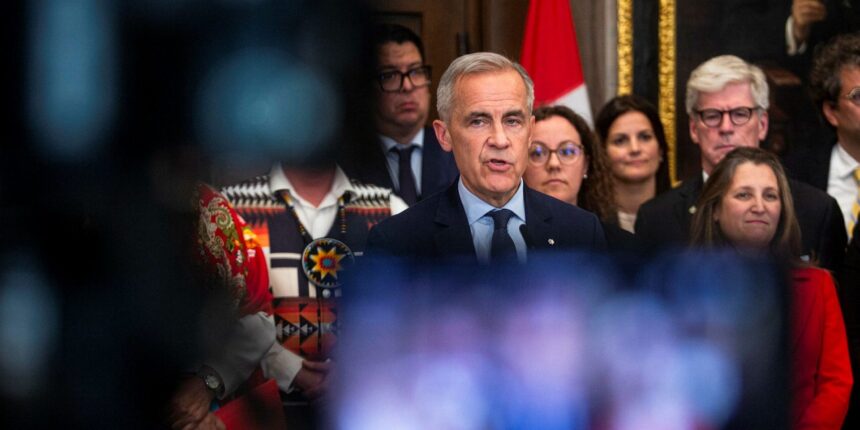In what analysts are describing as potentially the most significant restructuring of Canada’s federal workforce in generations, the incoming Carney administration faces difficult choices to fulfill its campaign promises without dramatically increasing the national deficit. Financial projections released yesterday by the Parliamentary Budget Office suggest that Liberal leader Mark Carney’s ambitious agenda could necessitate public service reductions on a scale not witnessed in modern Canadian history.
“The mathematics simply don’t add up without substantive changes to the federal workforce,” explained Dr. Eleanor Richardson, senior economist at the Canadian Centre for Policy Alternatives. “When you combine Carney’s promised tax relief measures with his infrastructure commitments, something has to give—and that something appears to be public service positions.”
The PBO report, which examines the fiscal implications of campaign promises across all major parties, singles out the Liberals’ platform as particularly challenging to implement without significant spending reductions. Conservative estimates suggest between 45,000 and 68,000 federal positions could be eliminated over a four-year period if all platform commitments are maintained.
Public service unions have responded with immediate concern. “We’ve seen this playbook before,” said James Thornton, president of the Public Service Alliance of Canada. “Promises made during campaigns quickly translate to cuts after the election. The difference this time is the sheer magnitude of what’s being contemplated.”
The report identifies several departments likely to bear the brunt of restructuring, including Transport Canada, Environment and Climate Change Canada, and various administrative divisions across multiple ministries. Notably, frontline services in healthcare, veterans affairs, and border security would largely be protected, according to the analysis.
Finance Ministry sources speaking on condition of anonymity have indicated that Carney’s team is already developing transition plans that would prioritize attrition and early retirement incentives over direct layoffs. However, the scale of projected reductions suggests involuntary separations would be unavoidable.
“What makes this situation particularly challenging is that these cuts would come after several rounds of ‘efficiency finding’ under previous administrations,” noted Dr. Patrick Leung, public administration professor at the University of Ottawa. “The low-hanging fruit has already been picked. Any further reductions will cut into operational capacity.”
The impacts would extend beyond Ottawa. Communities across Canada with significant federal employment centers, including Halifax, Winnipeg, and multiple Quebec municipalities, could face local economic repercussions from reduced federal employment.
Provincial leaders have expressed concern about downloading of responsibilities without corresponding funding. “If federal services are reduced in areas where there’s shared jurisdiction, the provinces will face impossible choices,” said Ontario Finance Minister Caroline Mulroney during a press conference in Toronto yesterday.
Carney’s team has disputed the report’s conclusions, insisting that modernization rather than elimination is their goal. “This administration will bring private sector efficiency to government operations while protecting essential services,” said campaign spokesperson Melanie Chen. “Our approach focuses on smarter government, not simply smaller government.”
Political observers note that previous governments have faced similar fiscal realities upon taking office. The Harper administration’s deficit reduction action plan eliminated approximately 19,000 positions between 2012 and 2015, while the Chrétien government’s program review cut roughly 45,000 positions over three years in the mid-1990s.
The difference this time, according to the PBO analysis, is both the scale and the compressed timeframe being considered. “Previous reductions were implemented gradually,” explained budget analyst Thomas McKinney. “The current projections suggest a much more accelerated approach would be necessary to meet fiscal targets.”
As debates intensify around the fiscal implications of campaign promises, the ultimate question emerges: can Canada maintain its expected level of public services while implementing substantial reductions to the workforce that delivers them, or will citizens ultimately be forced to recalibrate their expectations of what government can provide?


















